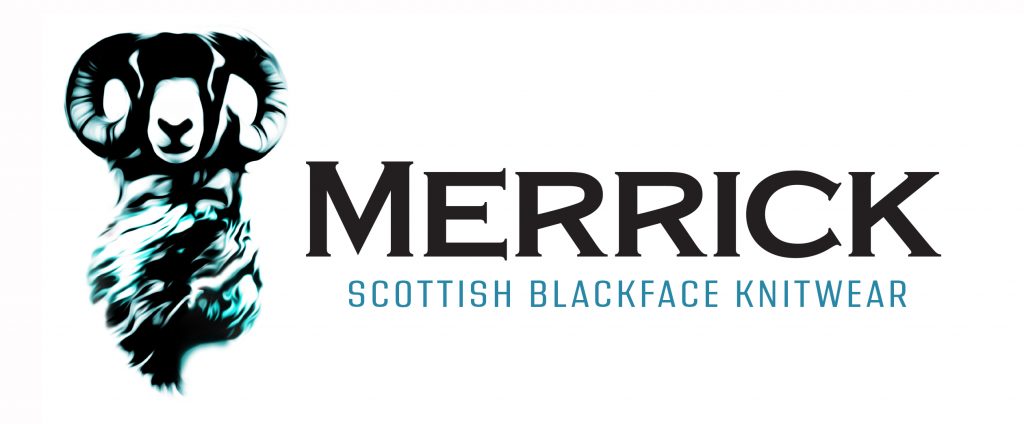GSAB launches Merrick Scottish Blackface knitwear and landmark Crowdfunder campaign
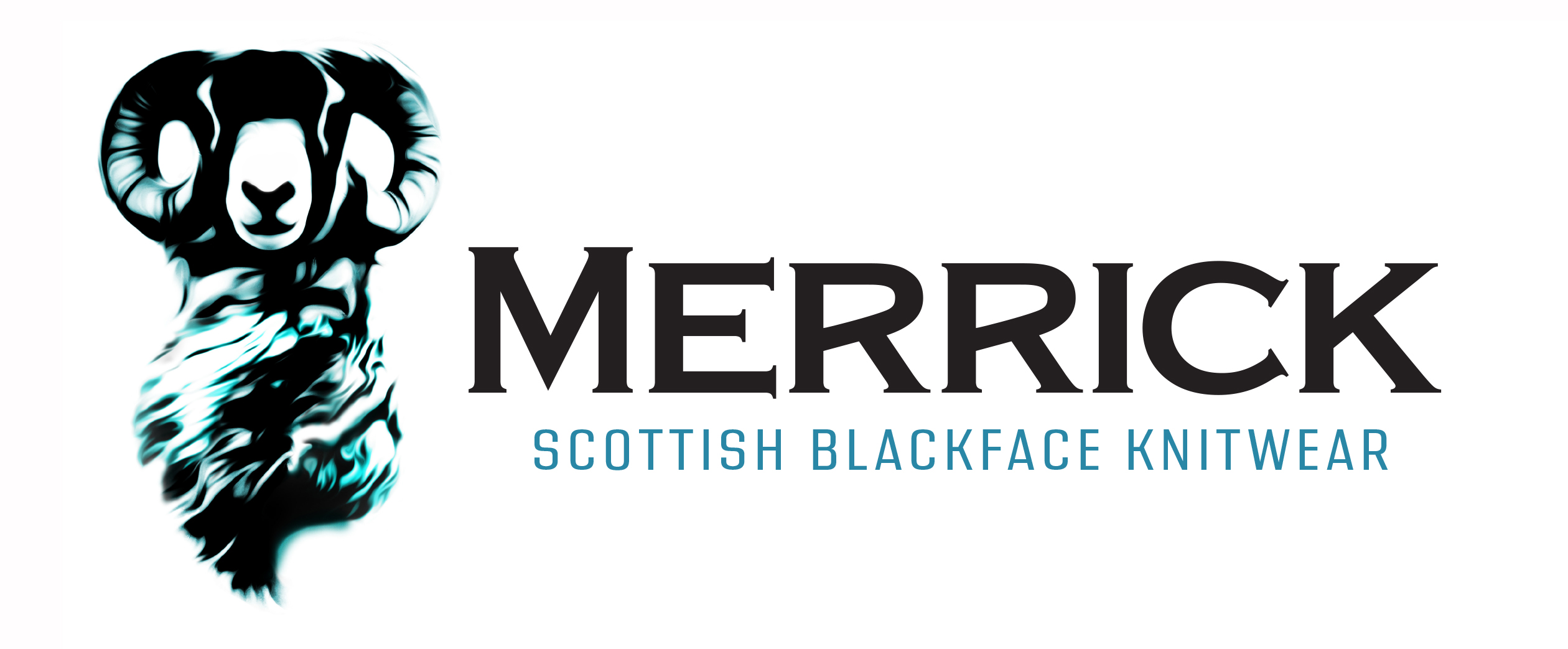
As the number of knitters increased by around one million in Britain alone in recent years and reports circulate of stars like Tom Daley, Ewan McGregor and Paul Rudd enjoying the craft, the world is beginning to recognise the value of this sustainable practice that builds a sense of community. The GSA Biosphere is now calling on public support to crowdfund a pioneering new social enterprise which will bring farming and fashion together to revive a traditional British industry, reduce farming waste, and make positive economic and environmental impacts on the world.
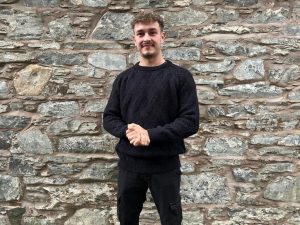 Merrick – our Scottish Blackface sheep knitwear brand launches today (9th November) alongside a landmark crowdfunding campaign that will support the next stages of the projects. Our goal is £12,500 and funds raised will be used to produce and market a new range of high-end knitted outerwear garments, created in partnership with local designers, makers, farmers, community representatives and more. The clothes will be made using 100% Blackface wool sourced within the UNESCO Biosphere region, and all sales profits will be put back into supporting the Biosphere’s ongoing work in conservation, education, climate resilience and sustainable development. With enough support, GSAB’s ground-breaking project could support Sustainable Development Goals in Scotland, and help protect our rural heritage by inspiring new uses for wool from Scottish Blackface sheep.
Merrick – our Scottish Blackface sheep knitwear brand launches today (9th November) alongside a landmark crowdfunding campaign that will support the next stages of the projects. Our goal is £12,500 and funds raised will be used to produce and market a new range of high-end knitted outerwear garments, created in partnership with local designers, makers, farmers, community representatives and more. The clothes will be made using 100% Blackface wool sourced within the UNESCO Biosphere region, and all sales profits will be put back into supporting the Biosphere’s ongoing work in conservation, education, climate resilience and sustainable development. With enough support, GSAB’s ground-breaking project could support Sustainable Development Goals in Scotland, and help protect our rural heritage by inspiring new uses for wool from Scottish Blackface sheep.
Launching the appeal on the Crowdfunder platform, Marie McNulty, GSAB’s Deputy Manager and Business Development lead, said: “It is crucial that we all work together to find new and unprecedented ways of tackling the biggest interconnected challenges of our time. This participative approach is at the very heart of the UNESCO Biosphere model and the Blackface Wool Project is a brilliant example of the impact it can make. By connecting people with their heritage and encouraging them to collectively explore solutions, this innovative project is already making a positive mark 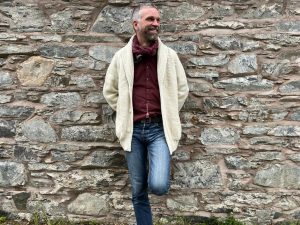 environmentally, socially and culturally, while reviving an important traditional rural trade. UNESCO has even congratulated us on our work in this area.
environmentally, socially and culturally, while reviving an important traditional rural trade. UNESCO has even congratulated us on our work in this area.
“The project’s early success is testament to the fantastic support we have had from British Wool, the Blackface Sheep Breeders’ Association, and farmers, business owners, creatives, organisations and individuals throughout the Biosphere region who are passionate about their Blackface wool heritage. After successful testing of our prototypes, we hope our crowdfunding initiative will now allow us to take our clothing range to market, showcasing the potential of locally-sourced wool in fashion design and instilling a greater sense of national pride in Scotland’s Blackface wool industry.”
Farming of Blackface wool from one of the country’s most recognisable sheep breeds dates back at least to the 12th century in the south of Scotland, and is commemorated in museums and heritage sites nationwide, including the renowned Sanquhar Museum in the north of the GSA Biosphere. However, the trend for ‘fast fashion’ left the sector’s future in doubt. Once much sought after due to its versatility, in recent years the value of Blackface fleece declined steeply as manufacturers sourced cheap man-made fibres elsewhere.
As the UN declared an “environmental and social emergency” within the global fashion industry, and consumer demand for transparency and traceability increased, the team at Scotland’s first UNESCO Biosphere saw an opportunity to spotlight wool’s potential:
- as part of the circular economy (which focuses on sharing, leasing, reusing, repairing, refurbishing and recycling existing materials);
- as a sustainable alternative to the greenhouse-intensive production of artificial fibres, which incurs tens of thousands of ‘textile miles’;
- to reduce carbon emissions in an industry that currently sends most Blackface wool for use in carpets abroad; and
- to directly benefit local farmers – all wool purchased for the project has returned much more than typical market value to farmers.
Explaining the need for the Biosphere’s project, Alec Telfer, President of the Blackface Sheep Breeders’ Association, said: “With an increasing awareness of the huge pollution issues brought on by micro-plastics in our atmosphere and oceans coming from oil based man-made fibres, wool must begin to be taken much more seriously. It is an extremely sustainable, natural and biodegradable product with outstanding environmental credentials, produced in the most natural environment in the world. It is vital that the fashion industry begin to use more wool and lead the way.
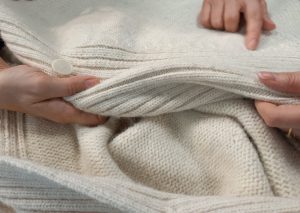 “The Galloway and Southern Ayrshire Biosphere’s exciting Blackface Wool Project, which is aiming to produce high end garments entirely and exclusively from the very best of Blackface wool, is what has been needed for a very long time.”
“The Galloway and Southern Ayrshire Biosphere’s exciting Blackface Wool Project, which is aiming to produce high end garments entirely and exclusively from the very best of Blackface wool, is what has been needed for a very long time.”
With funding from the Blackface Sheep Breeders’ Association and support from British Wool, the Biosphere team sourced 1,000kg of Blackface wool produced within the UNESCO-designated region. They then gathered a wide range of ideas through a variety of channels, including Bleat n’ Blether community events and a 400-strong Facebook group, The Wool Gathering, whose members tested lengths of Blackface yarn in knitting, weaving, and other creative projects.
One of the UK’s leading knit designers, Jo Storie, worked with the team to transform their ideas into the new high-end range of outdoor clothing. Speaking about the wool’s potential, she said: “Blackface sheep are the most numerous pure breeds in Britain, with the vast majority being found in Scotland. They are known for being a hardy breed, able to withstand the elements, which is clearly a selling point for the end use of their fleece. They produce a fibre that is not only renewable and sustainable, but also strong and durable, so stitches and structures are clean and well defined – this opens a lot of possibilities in terms of design. The wool is also thermoregulating, insulating and naturally biodegradable, so it’s an obvious choice for clothing and outerwear.”
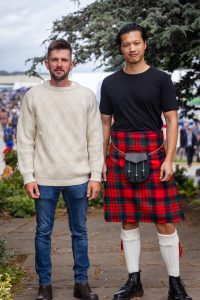 Evidencing the market appeal, Kyle Thomson (pictured left), a shepherd from the Scottish Borders, was one of the first to try on the prototypes while modelling in British Wool showcase ‘Flock to Fashion’ event at this year’s Royal Highland Show. Kyle said: “It is brilliant to see a product that was previously seen as little to no value being turned into comfortable high-end clothing. With its low cost and fashion industry’s reliance on manmade materials, I hadn’t really considered it would ever be used for this purpose.
Evidencing the market appeal, Kyle Thomson (pictured left), a shepherd from the Scottish Borders, was one of the first to try on the prototypes while modelling in British Wool showcase ‘Flock to Fashion’ event at this year’s Royal Highland Show. Kyle said: “It is brilliant to see a product that was previously seen as little to no value being turned into comfortable high-end clothing. With its low cost and fashion industry’s reliance on manmade materials, I hadn’t really considered it would ever be used for this purpose.
“When I put the jumper on, I was pleasantly surprised at how comfortable it was to wear. Even on a roasting hot day, it had great breathability. It was also a nice fit and a lovely colour. I tried on around six garments that day, and the Blackface wool jumper was definitely my favourite.
“Not only does the wool create incredibly stylish clothes, but it has a low environmental impact due to the way Blackface sheep are traditionally farmed. It is eco-friendly as it is a natural fibre with a plentiful supply in Scotland.”
Supporting GSAB’s Crowdfunder appeal, Graham Clark, Marketing Manager for British Wool said: “It is extremely exciting to see the early success of Galloway and Southern Ayrshire Biosphere’s Blackface wool project, which is very much in keeping with our mission to drive sustainable demand for wool. Product development and innovation are absolutely key to achieving this.”
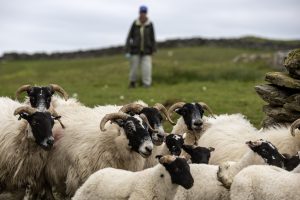 The global significance of the project, and the Galloway & Southern Ayrshire Biosphere’s wider work on sustainable farming, was recognised at a UNESCO meeting in Venice earlier this autumn. At the event, UNESCO and abrdn Charitable Foundation announced the funding of five projects around the world which support sustainable development. This included $25,000USD for the Galloway and Southern Ayrshire Biosphere for research and the development of guidelines to support farmers and land managers in sustainably managing their natural capital (natural assets that are valuable sources which can help people to survive and flourish, including soil, water, air, and biodiversity). The project will address biodiversity loss and mitigate climate change impacts.
The global significance of the project, and the Galloway & Southern Ayrshire Biosphere’s wider work on sustainable farming, was recognised at a UNESCO meeting in Venice earlier this autumn. At the event, UNESCO and abrdn Charitable Foundation announced the funding of five projects around the world which support sustainable development. This included $25,000USD for the Galloway and Southern Ayrshire Biosphere for research and the development of guidelines to support farmers and land managers in sustainably managing their natural capital (natural assets that are valuable sources which can help people to survive and flourish, including soil, water, air, and biodiversity). The project will address biodiversity loss and mitigate climate change impacts.
UNESCO Biosphere Reserves provide models for how people can live with nature and use resources for the wellbeing of people everywhere, through knowledge sharing and sustainable development that maintains respect for cultural values and society’s ability to cope with change. A participatory planning approach is at the heart of all Biosphere operations, and of the Blackface wool initiative. You can support GSAB’s Crowdfunder (which includes a range of unique Rewards) here, or click the image below.

